- News
- Reviews
- Bikes
- Components
- Bar tape & grips
- Bottom brackets
- Brake & gear cables
- Brake & STI levers
- Brake pads & spares
- Brakes
- Cassettes & freewheels
- Chains
- Chainsets & chainrings
- Derailleurs - front
- Derailleurs - rear
- Forks
- Gear levers & shifters
- Groupsets
- Handlebars & extensions
- Headsets
- Hubs
- Inner tubes
- Pedals
- Quick releases & skewers
- Saddles
- Seatposts
- Stems
- Wheels
- Tyres
- Tubeless valves
- Accessories
- Accessories - misc
- Computer mounts
- Bags
- Bar ends
- Bike bags & cases
- Bottle cages
- Bottles
- Cameras
- Car racks
- Child seats
- Computers
- Glasses
- GPS units
- Helmets
- Lights - front
- Lights - rear
- Lights - sets
- Locks
- Mirrors
- Mudguards
- Racks
- Pumps & CO2 inflators
- Puncture kits
- Reflectives
- Smart watches
- Stands and racks
- Trailers
- Clothing
- Health, fitness and nutrition
- Tools and workshop
- Miscellaneous
- Buyers Guides
- Features
- Forum
- Recommends
- Podcast
news
“He should be wearing hi-vis”: Lorry driver turns himself into police after “worst close pass ever” – but motorists still find ways to blame cyclist; Cycle lane slammed due to loss of illegal parking spaces; Tour de France routes + more on the live blog
SUMMARY
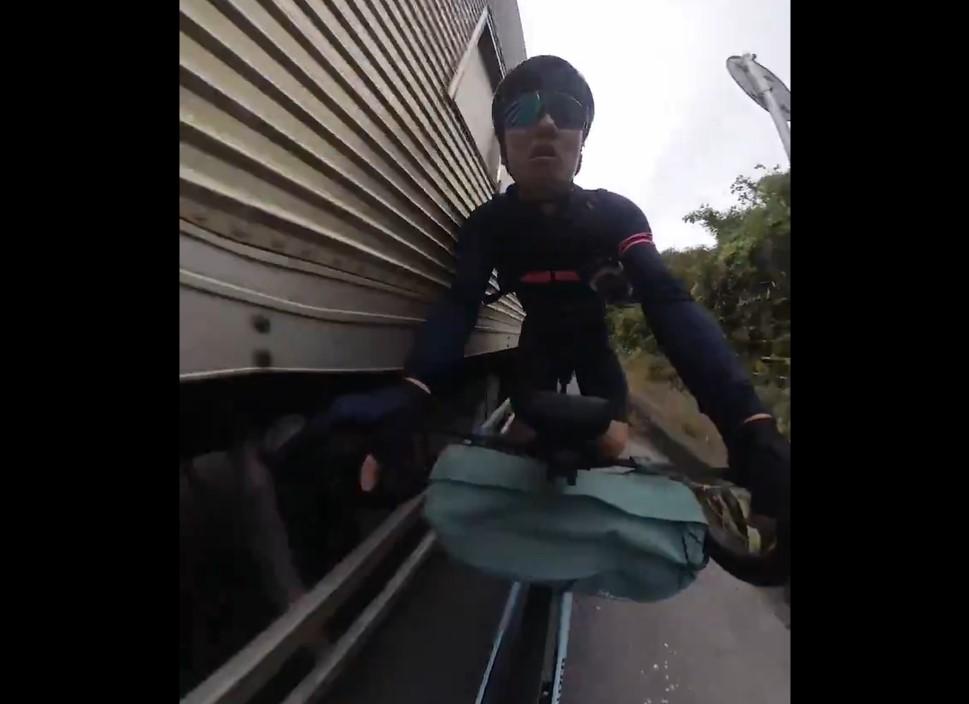 Lorry driver narrowly misses cyclist in shocking close pass in Japan (Pedal Perspective, X)
Lorry driver narrowly misses cyclist in shocking close pass in Japan (Pedal Perspective, X)29 October 2024, 15:57
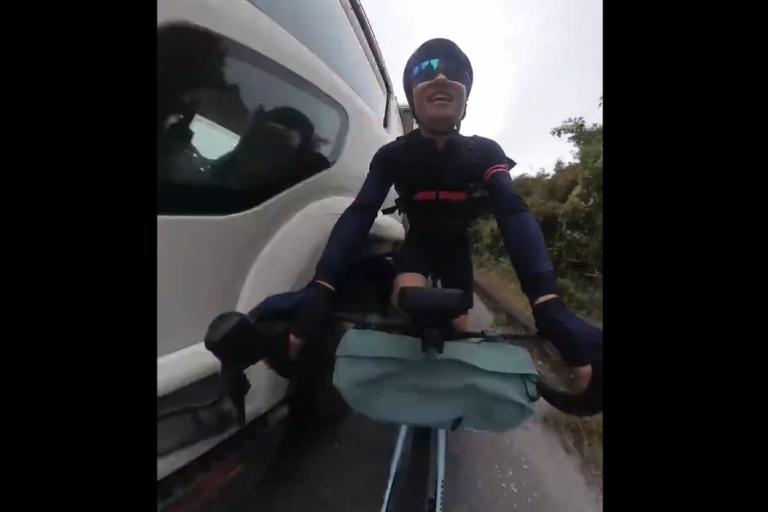
“He should be wearing hi-vis and not blocking the road”: Lorry driver in Japan turns himself in to police after “worst close pass ever” – but motorists still find ways to blame the cyclist
Over the years on road.cc, we’ve seen some shockingly close passes and frightening near misses, experienced by cyclists at the hands of dangerous drivers.
Our Near Miss of the Day series hasn’t surpassed the 900 mark for nothing, after all.
But this brutally close overtake (if we can call it that) by a lorry driver, captured by a cyclist in Japan and posted on social media last night, is arguably the most shocking of the lot:
That was shockingly close!
Unfortunately, I hear that the authorities in Japan are even worse than the authorities in the UK, when it comes to prosecuting drivers who close pass cyclists. pic.twitter.com/gzC4YIptCz
— PedalPerspective (@Pedalperspectiv) October 28, 2024
Bloody ‘ell. How he managed to keep that upright, I’ll never know.
“That’s the most horrific close pass I’ve ever seen,” said Tim, in response to the clip, while others also described the incident as the “worst close pass ever”.
And it’s hard to argue with that assessment.
“Not sure you can call that a pass, more of a brush!” added Cycling in London.
“I’ve cycled in Japan – the close passing is horrendous. Despite that cycling is still very popular. It made me very uncomfortable,” wrote Cristiona.
“Lucky he rides with straight arms, that would have shattered my elbow,” noted Simon.
“That was shockingly close!” said Pedal Perspective, who shared the video on Twitter. “Unfortunately, I hear that the authorities in Japan are even worse than the authorities in the UK, when it comes to prosecuting drivers who close pass cyclists.”
On that note, a social media user claiming to know the cyclist said the cyclist was “able to report this to police but had to jump through some extra hoops”, after apparently being passed from police station to police station before finding the correct one to file his report.
He also claimed that, in a turn up for the books, the lorry driver actually turned himself in to the police. Now you don’t see that every day.
But, despite the offending close passing driver himself seemingly putting his hands up in the air and admitting his guilt, that hasn’t stopped the usual suspects on Elon Musk’s post-common sense platform to weigh in with yet more bizarre victim blaming.
Yep, even for this one.
“Genuine question, is it still a requirement, or good practice to look behind you before you manoeuvre on a bicycle,” asked Rod, for some reason.
“Maybe wear bright colours, I know I would,” added Andrew, starting a hi-vis victim blaming theme in the comments.
“He should be wearing hi-vis and riding in the ditch, not blocking the roads that are paid for by hard working tradies,” said Jan.
Meanwhile, Stu added: “Maybe he didn’t see you because you’re dressed in black, you moron.”
And Jimmy said: “Shouldn’t be riding his bike on the highway like that. Seems like a no brainer right!”
“Boohoo,” concluded Johnny. “Stop cycling in the middle of the road you w@nkers.”
If Johnny thinks that’s the middle of the road, no wonder there are so many close passes, eh?
29 October 2024, 17:18

“A Rolling Stones setlist of a route”: Five key stages from next year’s nostalgia-fest Tour de France route
Tadej Pogačar and company have been spending the past few seasons turning back the clock with their old school, attacking tactics, so it’s only fitting that ASO eventually leaned into the retro vibe with a very nostalgia-laden Tour de France route for 2025.
Described by cycling writer Peter Cossins as a “Rolling Stones setlist of a route”, the 2025 Tour Hommes parcours, unveiled today in Paris, certainly isn’t lacking in tried and trusted warhorses, with one or two long-forgotten singles also coming to the fore after a few decades spent on the shelf.
Perhaps buoyed by last year’s successful return of the long thought dormant Puy de Dôme, there’s a real 1980s vibe to some of the summit finishes, with the Pyrenean climb of Superbagnères – where Greg LeMond and Bernard Hinault battled it out in 1986 – making its first Tour appearance since 1989, when Robert Millar (now Pippa York) won.
La Plagne, the scene of Stephen Roche’s dramatic revival in 1987, also returns to the Tour for the first time in 23 years.
Oh, and the fearsome, legendary Mont Ventoux (the Sympathy for the Devil of Tour climbs) makes its every-so-often inclusion in the route, and as a summit finish for the first time since 2016, when we didn’t quite reach the top due to strong winds and Chris Froome was memorably forced to run after a chaotic crash.
Just like a Stones gig, the 2025 Tour promises to deliver all the thrills and excitement honed to perfection down the decades – while Pogačar will be hoping his quest for a fourth yellow jersey won’t lead to him getting no satisfaction. But, as Jonas Vingegaard knows, you can’t always get what you want (alright, that’s enough).
Anyway, here’s my top five stages to mark in your calendar ahead of next year’s Grande Boucle.
Stage 10, Ennezat to Le Mont-Dore Puy de Sancy, 163km
With ten stages until the first rest day, the first week (‘week’ in its loosest sense) of the 2025 Tour is a long and varied one, with opportunities for the sprinters – including a chance for yellow on the first day in Lille – interspersed with a few lumpy stages with punchy finishes, as well as a GC-restructuring 33km time trial in Caen on stage five.
But stage ten’s saw-toothed profile in the Massif Central, on Bastille Day no less, is the first time the battle for the yellow jersey could be blown to pieces. And with ten straight days under their belt, the relentless nature of the profile, featuring seven climbs, could be the undoing of at least one big name.
Stage 13, Loudenvielle to Peyragudes, 11km mountain time trial
Bike change or no bike change? The second time trial of the 2025 Tour, featuring three kilometres of flat plus an eight kilometre ascent to the top of Peyragudes (the Pyrenean Frankenstein’s Monster of the classic Peyresourde mountain), promises to be a humdinger.
And, judging by the Tour’s recent history of mountain time trials, it could well decide the race.
Stage 14, Pau to Luchon-Superbagnères, 183km
It’s wall to wall classics for stage 14, with the organisers plumping for an almost exact replica of the stage that saw Greg LeMond put almost five minutes into race leader and teammate/deadly enemy Bernard Hinault back in 1986.
The Tourmalet, Aspin, Peyresourde, and a throwback summit finish at Superbagnères? What more could you want from 183km of Pyrenean racing? Oh, and someone please get 1989 stage winner (and 1986 stage runner-up) Pippa York on commentary or pundit duties for this one, please.
Stage 16, Montpellier to Mont Ventoux, 172km
It’s the Ventoux. ‘Nuff said.
Stage 18, Vif to Courchevel Col de la Loze, 171km
After a rendezvous on the Ventoux, the riders finally head into the Alps, where two Tour staples, the Glandon and Madeleine, set the scene for a modern Tour classic, the Col de la Loze, at 2,300m the high point of the 2025 race and a fitting end to a stage packed with proper Alpine giants.
Oh, and with 5,500m of climbing, it’s officially the hardest Tour stage ever. Deep into the third week, I’m sure the sprinters will be delighted.
29 October 2024, 16:48

“We’ll see…”: Mark Cavendish refuses to rule out riding 2025 Tour de France (at least in public)
I knew it!
Speaking at today’s Tour de France route presentation in Paris, Mark Cavendish kept us all on tenterhooks when it comes to the possibility, however slim, of the Manx Missile lining up in Lille next July, for another crack at the Tour and stage win number 36.
“Like everyone who has ridden the Tour de France or the Tour de France Femmes, you finish it and you think: ‘I’ll never do that again’, then a couple of days later, you miss it and you long for the buzz the year after,” the 39-year-old said on stage in Paris today.
When asked what he felt about another tilt at the Tour beyond his 40th birthday next year, Cavendish coyly replied: “We’ll see.”
Oh Mark, you tease.
(Zac Williams/SWpix.com)
So, does that mean the Tour stage win record holder is seriously reconsidering his retirement plans, or is this all an elaborate ruse to drum up interest for what will be his last appearance as a professional at ASO’s Tour-themed crits in Singapore in a few weeks?
I’ll venture it’s the latter. Especially when you take into account Cavendish’s own take on post-Tour life.
“Life has been great,” he said during the presentation. “I’ve been riding my bike, spending time with my kids. I just haven't been shouting at races anymore.
“I’ve been travelling and I’ve been busy. I’ve just come back from a holiday with my children. It was the first time I could really enjoy a holiday, which is very, very nice.”
And, despite his coy hints in Paris today, I reckon the Cavendish family could well be gearing up for their first July holiday in a while next year.
29 October 2024, 15:46
Is your cycling motivation low as the days get darker and colder?
Don’t worry, so’s mine – which is why I’m glad Emily’s put together this handy guide/motivational package to help you (and me) make the most of the winter months on the bike:
> How to increase your cycling motivation in winter — essential tips to keep your spirits up on the bike when the temps drop
I’m just having one more week of doing nothing, I promise…
29 October 2024, 14:52
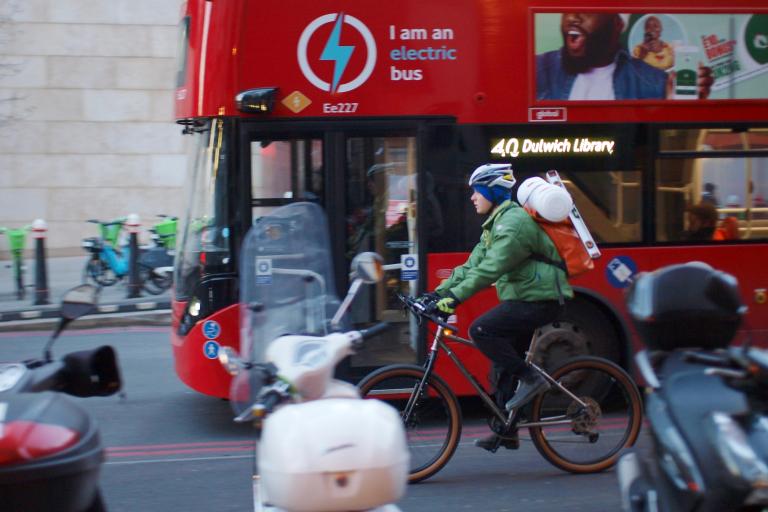
Transport Action Network says it needs to raise extra £7,000 by 12 November to proceed with appeal against cuts to cycling and walking funding in England
The Transport Action Network (TAN), the campaign group currently in the midst of a legal challenge against last year’s cuts to cycling and walking funding in England, says it needs to raise an additional £7,000 by 12 November to proceed with its legal appeal.
Last week, the Court of Appeal granted permission to the TAN to challenge the cuts made last year by the Conservative government, with the judge citing a “real prospect of success” in overturning an earlier ruling, in a decision considered pivotal to future long-term investment in active transport.
The Rt Hon. Lord Justice Lewison said the campaigners can now appeal against an earlier ruling that active travel funding cuts were legal as any funding was only “intended” to be made available, rather than based on a firm commitment, leading to the £200m worth of cuts made in 2023.
The TAN’s director Chris Todd said that the earlier ruling in the summer, which downgraded the previous funding commitments to simply “intended”, threatens “the target to increase walking and cycling to half of urban journeys by 2030”.
However, in order to continue their appeal, TAN says it needs to raise an additional £12,000 by 12 November, bringing their crowdfunding total to £50,000. Since last week’s news, around £5,000 has already been raised, meaning £7,000 is now needed to keep the appeal rolling along.
TAN also says it needs an additional £30,000 (amounting to a total of £70,000) to cover its legal challenge in total, but adds that the extra funding can be secured further down the line.
“Besides the legal merits, having this challenge as the Government carries out a multi-year spending review in spring 2025 would be incredibly good timing,” Todd said on the group’s Crowd Justice page.
“It would raise the profile of walking and cycling funding at this crucial moment. Cycling and walking are essential to all the new government’s missions for growth, health, safe streets, climate and opportunity. Please help us take on the Treasury by donating to our appeal and sharing this widely with friends, colleagues, and family.”
29 October 2024, 14:29
More cycling police chase action from Colchester
It seems like the UK is just full of police officers running about, borrowing bikes off unsuspecting members of the public to chase down crims.
Last week in Colchester, in what could be a new live blog series it’s happening so frequently these days, Essex Police’s city centre team were on foot patrol when they were informed over their radios that a man wanted for domestic abuse offences had escaped from officers and was headed towards Castle Park.
In a social media post, Essex Police continued: “The man was spotted by PCSO Oscroft-Curtis and upon realising started to run again. PC Mond who was on foot patrol in the park quickly spoke to a member of the public who was pushing his bicycle through the park, and borrowed the push bike to pursue the man who was intent on getting away.
“Utilising the push bike, and the city centre CCTV, the man was arrested for threats to kill, criminal damage offences, and drug offences and taken to custody.
“The push bike was then returned to the owner with a very big thank you.”
Cycling, making the world a safer place every day.
29 October 2024, 09:07
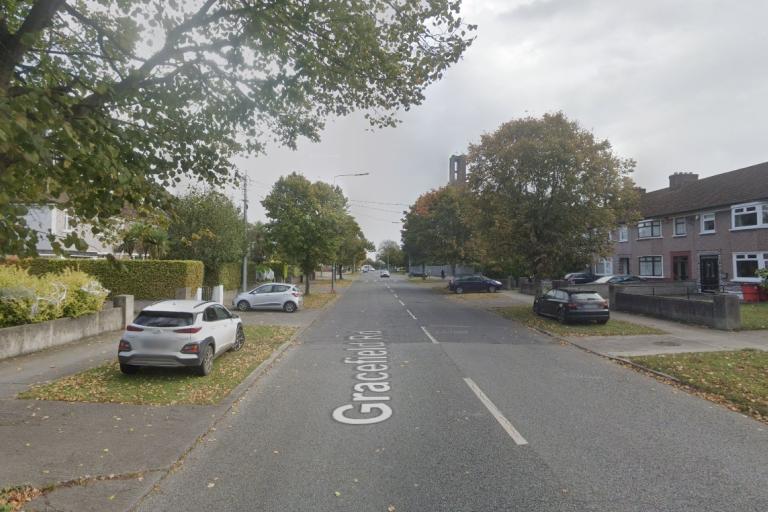
Cycle lane plans opposed because residents will no longer be able to illegally park on grass verges outside homes “while having parties” – despite project including 16 new legal spaces
Ah, the old ‘loss of parking spaces’ chestnut.
Whether it’s in residential areas or near town centres, councillors, business owners, and a few nervy local NIMBYs will all greet the looming spectre of some new protected cycling infrastructure with the same piercing exclamation: ‘But what about the car parking spaces?!’
We’ve heard it all in the past, from residents in York opposing a new active travel and public transport overhaul in the city because they were worried about losing parking spaces on the street, to Brighton-based business owners who were scathing of the council’s plans to remove two car parking spots, to make way for eight hire bike spaces.
But in Dublin this week, things have taken an even stranger turn on the NIMBY (or should that be Not Outside My House?) front.
IrishCycle.com has reported that plans for a new cycling and walking scheme in the city have been opposed by councillors due to the potential loss of car parking spaces – which, judging by the road in question, means that residents will no longer be able to illegally park on the grass verges or footpaths outside their homes.
And, to make things even more ridiculous, the cycle lane scheme in question even includes provision for 16 actual, legal car parking spaces – so residents don’t have to abandon their cars on the grass or pavement anymore, like this:
Won’t someone please think of the illegally parked cars?
But that hasn’t stopped the usual opposition from rearing its head – But, hey, anything to stop a new cycle lane, eh?
In a recent committee meeting at Dublin City Council, independent Barry Heneghan called on his fellow councillors to agree “that this North Central Area Committee notes that residents of Gracefield Road and Brookwood Avenue are unhappy with the proposed number of parking bays outside residences along the route of the Gracefield Road to Vernon Avenue Walking and Cycling Scheme and calls for the inclusion of additional parking bays to be added to the scheme design that would be commensurate with current parking capacity, and that this be communicated to residents, before the project goes to the tender stage.”
The council’s response to Heneghan’s motion noted that the local authority was formalising 16 car parking spaces as part of the scheme (though it didn’t point out, unfortunately, that the current spaces highlighted by Heneghan are, in fact, illegal).
The council also said that providing any extra spaces would cause issues with trees and utility boxes, and that residents could apply to convert their garden spaces into a parking facility.
“It is proposed to create sixteen areas that will facilitate parking along sections of the route,” official said. “These will be at various locations along Gracefield Road and Brookwood Avenue. Providing additional locations for parking would be unreasonable, as it would require removal of trees and utility infrastructure.”
However, Heneghan responded by saying the scheme would be unfair on residents who want to host parties. Yes, that’s right.
“I don’t think it is really fair, I think people are not really considering mobility issues, people having a family party or anything like that,” he said.
“Just to show my support for the residents, the amount of car spots that are being removed should be added to the scheme. It’s ridiculous for any residents who are living on the road, they want their car spots and there is space and there is area where they [the project team] could omit a tree and put in two more car spots.
“People who are having people over [to visit], people who are elderly, they need those car spots.”
However, not everyone was on board with Heneghan’s party-based amendment.
“I don’t know how many car parking spaces are being sought here, is there a number?” asked Social Democrat Paddy Monahan. “Because if we’re going to fundamentally undermine a scheme which has been designed by the engineers, I’d like to know exactly what we are agreeing with.
Monahan also said it was “magical thinking” to think councillors could “sprinkle magical dust” to provide for everything on a project with limited street space, on a street which already has a “huge number” of parking spaces.
Nevertheless, Deirdre Heney of Fianna Fáil added that those designing active travel schemes should put themselves in the position of the “people losing parking spaces” and “maybe go halfway or whatever”, because residents are “sharing the road space”.
Yes, the space that is currently grass on a public street, and is illegal to park on, which will make way as part of the scheme for proper parking… Oh, I give up.
29 October 2024, 14:09
Cycling UK and British Cycling urge Labour to “significantly increase” active travel budget to 10% of transport spending
A coalition of academics, health groups, cycling organisations and other major bodies have written to Labour’s Chancellor Rachel Reeves calling for active travel funding to be increased to 10 per cent of the overall transport budget.
Cycling UK, British Cycling, Greenpeace, the Centre for Mental Health and the Association of Directors of Public Health are among the 18 organisations to have asked the Chancellor to “significantly increase investment in walking, wheeling, and cycling”.
Read more: > Cycling UK and British Cycling urge Labour to “significantly increase” active travel budget to 10% of transport spending
29 October 2024, 13:24
Former co-chair of All Party Parliamentary Group for Cycling and Walking appointed new chair of Transport Committee
Ahead of tomorrow’s Budget, the House of Commons has formally appointed its new Transport Committee, which will be headed by Labour MP Ruth Cadbury, who co-chaired the All Party Parliamentary Group for Cycling and Walking for eight years.
Before resigning from the role in December 2023, upon her appointment as Shadow Justice Minister, Cadbury had called for motorists who commit driving offences while behind the wheel of larger, heavier cars to receive tougher penalties, with the size and weight of the vehicle seen as an “aggravating factor” when it comes to sentencing.
A constant advocate for “consistent” funding for active travel, Cadbury also argued last year that promoting cycling and walking policies should not be controversial.
“Debate around active travel can be polarising,” the MP for Brentford and Isleworth said. “In reality, I don’t think it's controversial at all... the talk of 15-minute cities, that term may have become a bit pejorative, but basically it means having the things you need within 15 minutes walk or cycle, including points of public transport.
“For most of us this is popular and it provides tangible benefits for communities – cleaner air, better high streets, easier access to amenities and safer roads – as well as free travel and healthier outcomes for those who walk or cycle.”
Cadbury, who was appointed as chair by all members of the Commons last month, will be joined in the Transport Committee by Steff Aquarone (Liberal Democrats), Dr Scott Arthur (Labour), Catherine Atkinson (Labour), Elsie Blundell (Labour), Olly Glover (Liberal Democrats), Katie Lam (Conservative), Alex Mayer (Labour), Baggy Shanker (Labour), Rebecca Smith (Conservative), and Laurence Turner (Labour).
29 October 2024, 12:06
The road.cc front bike lights beam test is back!
You know the clocks have changed when…
> road.cc front bike lights Beam Test 2024/25 — our big Beam Comparison Engine is live to help you choose the best front light for your riding
29 October 2024, 11:44
Throwback Tour day: Host of legendary climbs set to return to Tour de France for 2025, with Mont Ventoux, Hautacam, Superbagnères, and La Plagne all featured as summit finishes (plus mountain time trial to Peyragudes) in epic, brutal route
A lot to digest in next year’s Tour de France Hommes route, from a Ventoux rendezvous to an epic trio of stages in the Pyrenees, some nuggets for 1980s cycling nostalgia merchants (La Plagne! Superbagnères!), and two interesting time trials (one flat, one not so much), plus a lot else in between.
I’ll get back to you soon with some fully (or at least partially) formed thoughts, but it’s clear that, if Pogačar, Vingegaard, and Evenepoel are all fit and in form, it could be one for the ages.
See, I told you it was like Christmas!
29 October 2024, 11:22
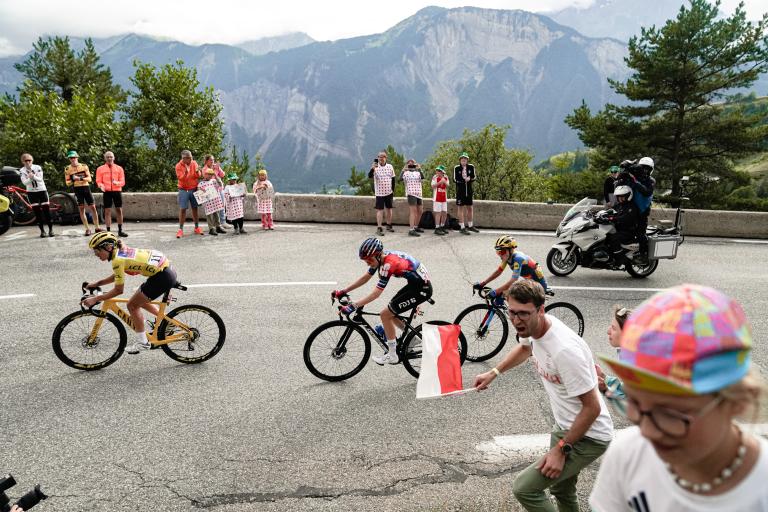
“The level in women’s cycling is rising”: Longest ever edition of the modern Tour de France Femmes set to feature Col de Joux-Plane and brutal Col de la Madeleine summit finish
This is like Christmas Day…
Your cycling watching summer is currently being planned out by Christian Prudhomme and Marion Rousse at ASO’s annual fancy shindig in Paris, and it looks like it’s going to be a cracker.
First up this morning, we had the news that the women’s peloton is set for the longest and hardest edition yet of the modern iteration of the Tour de France Femmes, which will take place across nine days and conclude with a gruelling three days in the Alps, featuring legendary climbs like the Col de Joux-Plane and the fearsome Col de la Madeleine.
A Grand Départ in Brittany, one of France’s cycling heartlands, will coincide with the first two stages of the men’s race and means a grippy opening few days, with stage one finishing on Plumelec’s famous uphill drag to the Côte de Cadoudal.
A series of three rolling yet tough days will give the sprinters a chance, before a hilly finale in Guéret on stage five.
And then out come the big guns. Stage six represents a not so gentle introduction into the Alps, with three sizeable if surmountable climbs near the finish in Ambert, before things really kick into gear the following day, which will see the riders tackle the Col du Granier (8.9km at 5.4 per cent), before a rapid descent to the finish in Chambéry.
The legendary slopes of the Col de la Madeleine on the eighth stage could well prove pivotal in deciding the final yellow jersey, with its 18.6km, 8.1 per cent slopes hosting a summit finish, while the mighty Col de Joux-Plane could form a springboard for some last-ditch attacks on the final stage, which will end with a draggy finish to Châtel.
“The level in women's cycling is rising and that's why we have nine stages instead of eight. And nine hard ones,” race organiser Marion Rousse said this morning, while revealing the race details.
Now that’s an understatement.
29 October 2024, 10:52

Cycling’s crypto fascination continues, as Tour de France winner Kasia Niewiadoma’s Canyon-SRAM team set to become Canyon-SRAM zondacrypto from 2025
I’ll be honest with you, I had completely forgot all about cryptocurrency and blockchains, and all that other virtual nothingness (two years is a long time in the cycling crypto world, apparently), until I read Canyon-SRAM’s latest press release this morning, which announced that this year’s Tour de France Femmes winners will henceforth be known as Canyon-SRAM zondacrypto, in a three-year deal signed in Monaco last week.
Of course, this isn’t the first time cycling has dipped its toe in the crypto pool – just as Colnago, or Wout van Aert, or Rich Mitch – but Canyon-SRAM’s new title sponsor does mark the first time that a Bitcoin company has put its name to a team since Qhubeka’s ill-fated partnership with the mysterious NextHash in 2021.
According to Canyon-SRAM’s press release, the Poland-based zondacrypto is one of the Central and Eastern Europe (CEE) region’s largest regulated cryptocurrency exchange marketplaces (I don’t know either), with licenses to operate in Italy, Switzerland, Cyprus, Lithuania, Slovakia, Estonia, and Canada and “serving a growing community of over 1.3 million active users”.
(A.S.O./Charly Lopez)
“We’re excited to welcome zondacrypto as one of our main partners starting in 2025,” team manager Ronny Lauke, who guided Kasia Niewiadoma to her maiden Tour de France Femmes title this summer, said.
“As we evolve as a team, it’s essential to align with partners that share our drive for innovation and ambition. The dynamic approach to digital finance that zondacrypto has, coupled with its vision for the future, makes it the perfect partner to help us push boundaries both on and off the bike.
“Together as CANYON//SRAM zondacrypto, we look forward to forging new paths and continuing to elevate women’s cycling globally.”
Meanwhile, Przemysław Kral, zondacrypto’s CEO (so apparently they are aware of capital letters), added: “zondacrypto holds the yellow jersey of the cryptocurrency industry leader in the CEE region. Now we are riding together with the world’s leading cycling team, which includes the last winner of the Tour de France Femmes avec Zwift on board. As a brand, we are very committed to supporting female sports. We are already partners of Magdalena Fręch and Giro d’Italia Women. And now it’s time to start racing together and achieve many more successes.”
Let’s just hope they agree on a letter case before the season starts…
29 October 2024, 10:17
Cav for the 2025 Tour?!
It’s Tour de France route presentation day, and Sir Mark of Cavendish is in the building.
Does that mean the 35-time Tour stage winner has decided to backtrack once again on his retirement plans, and has jetted over to Paris to scout out opportunities for stage win number 36?
You're not the only ones looking forward to discovering the courses! 😁
Vous n'êtes pas les seuls à avoir hâte de découvrir les parcours ! 😁
#TDF2025 | #TDFF2025 pic.twitter.com/LqTTaZYxag
— Tour de France™ (@LeTour) October 29, 2024
No, it almost certainly does not. Though you never can tell with Cav… Actually, you know what, this time, you definitely can.
29 October 2024, 10:09
Reasons to avoid Strava, #39: Because it could… errr, put world leaders in danger?
After obtaining a PhD, lecturing, and hosting a history podcast at Queen’s University Belfast, Ryan joined road.cc in December 2021 and since then has kept the site’s readers and listeners informed and enthralled (well at least occasionally) on news, the live blog, and the road.cc Podcast. After boarding a wrong bus at the world championships and ruining a good pair of jeans at the cyclocross, he now serves as road.cc’s senior news writer. Before his foray into cycling journalism, he wallowed in the equally pitiless world of academia, where he wrote a book about Victorian politics and droned on about cycling and bikes to classes of bored students (while taking every chance he could get to talk about cycling in print or on the radio). He can be found riding his bike very slowly around the narrow, scenic country lanes of Co. Down.
Latest Comments
- Born_peddling 4 hours 3 min ago
Muddyfox tour 100's I've wide & flat feet plus there's the optional choice of using cleats with them...
- Prosper0 3 hours 57 min ago
Just doing the Lord's work in case anyone's interested in this product. This Mucoff Pump is a £100 rebrand of an £85 Rockbros rebrand of a £60...
- mdavidford 4 hours 42 min ago
You forgot ignoring half the race to show awkward interviews with the riders' Proud Parents™ instead.
- mdavidford 4 hours 46 min ago
Obviously it means 'springing out of the bunch' on a critical sector. Or maybe it's referring to the time of year.
- David9694 5 hours 33 min ago
Car crashes through garden wall for second time in 18 months https://www.wiltshire999s.co.uk/car-crashes-garden-second-time/
- David9694 5 hours 35 min ago
Woman taken to hospital after flipping car onto roof in Trowbridge...
- A V Lowe 6 hours 17 min ago
Its blindingly obvious from the image that the DKE of the buses include the mirrors which extend to nearly reach the edge of the tarmac pavement on...
- Sredlums 6 hours 50 min ago
It's sad when being very good at your job - any job - isn't enough to earn a decent living. It shouldn't be that way....
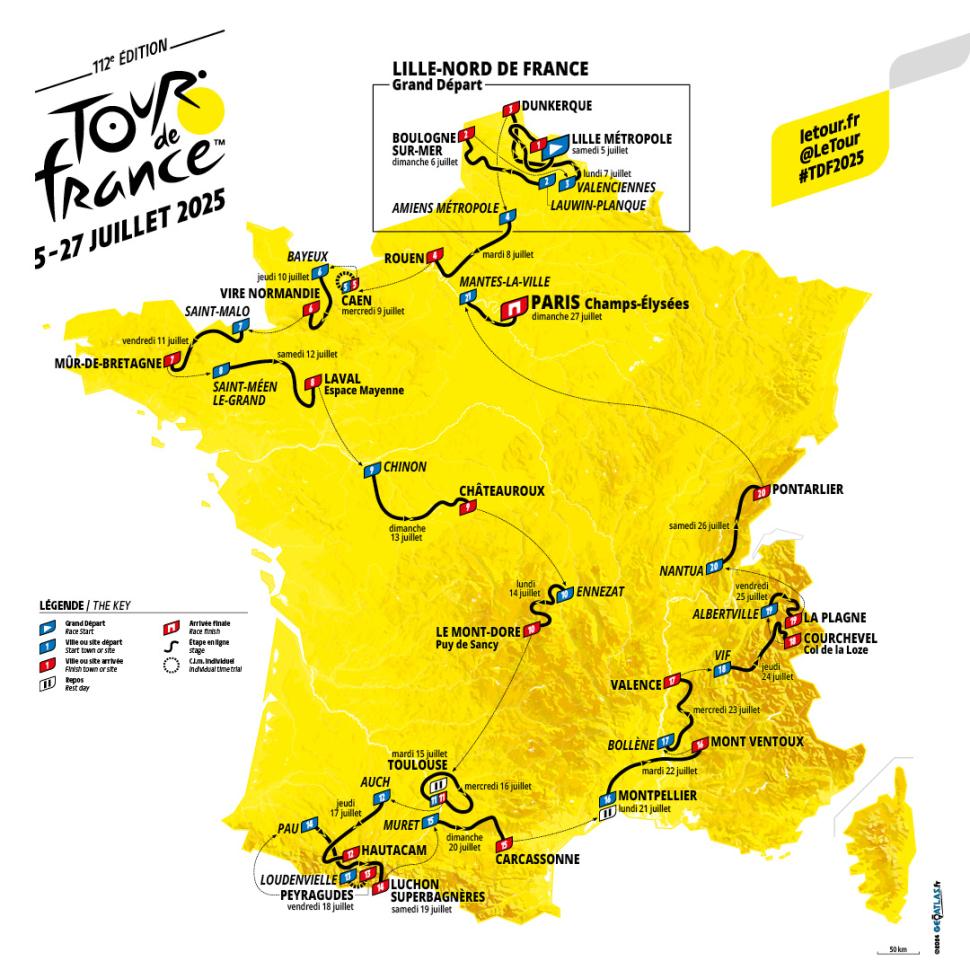

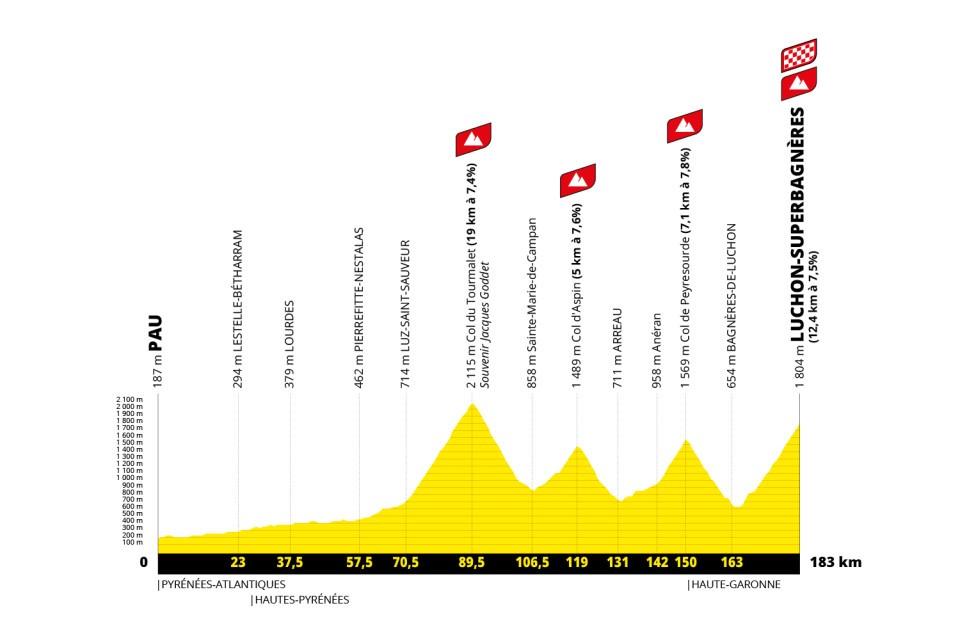
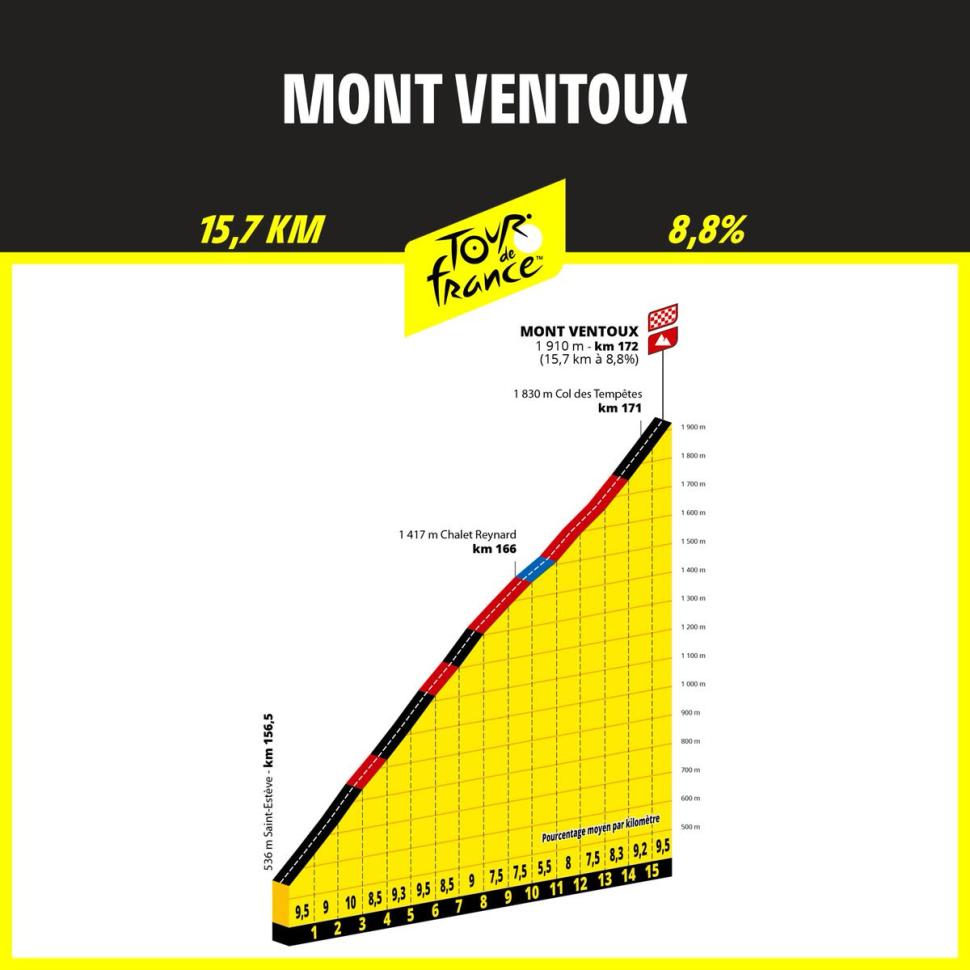
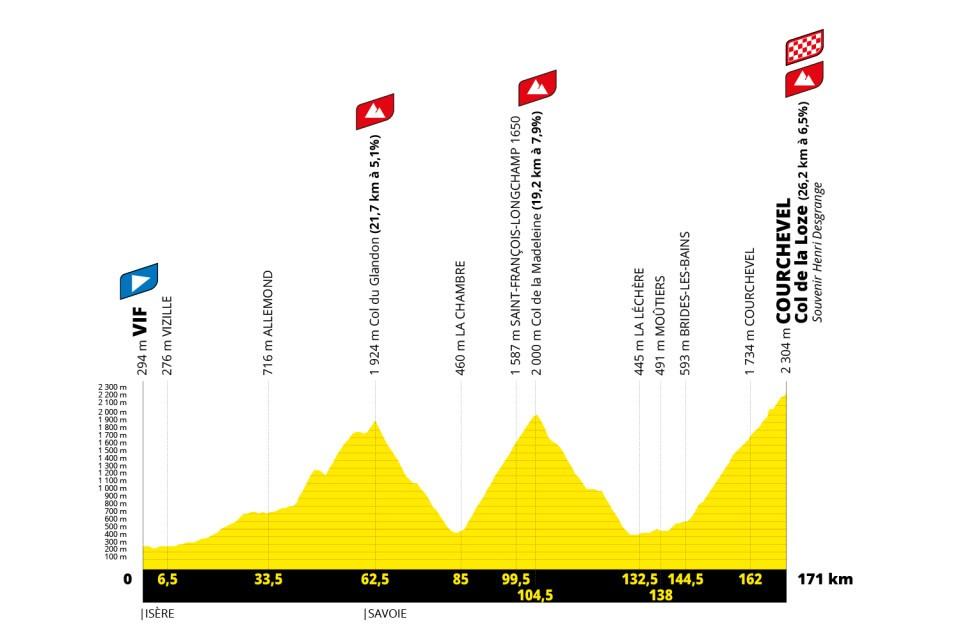

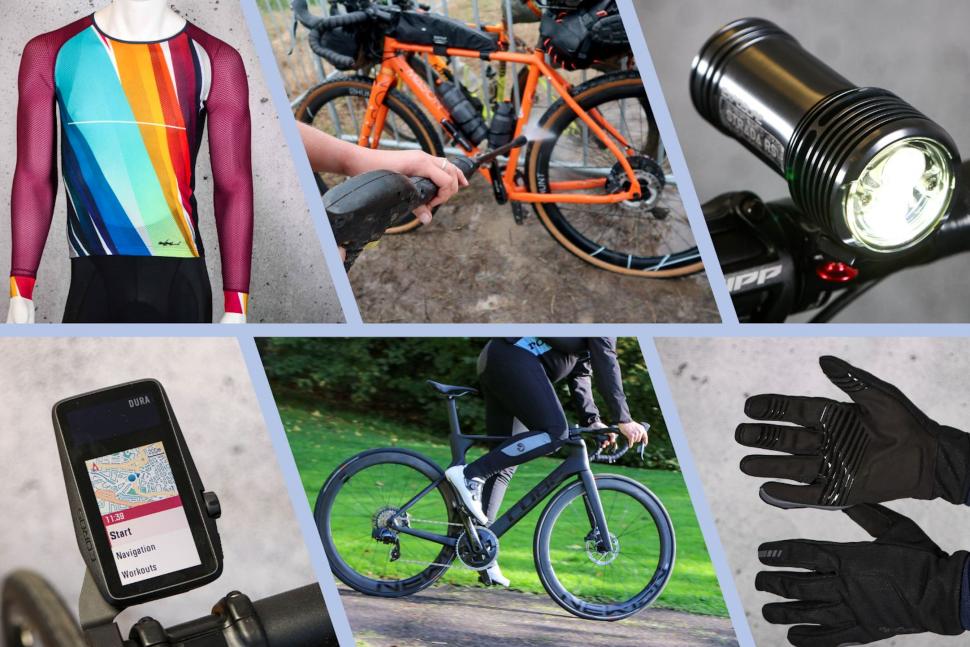
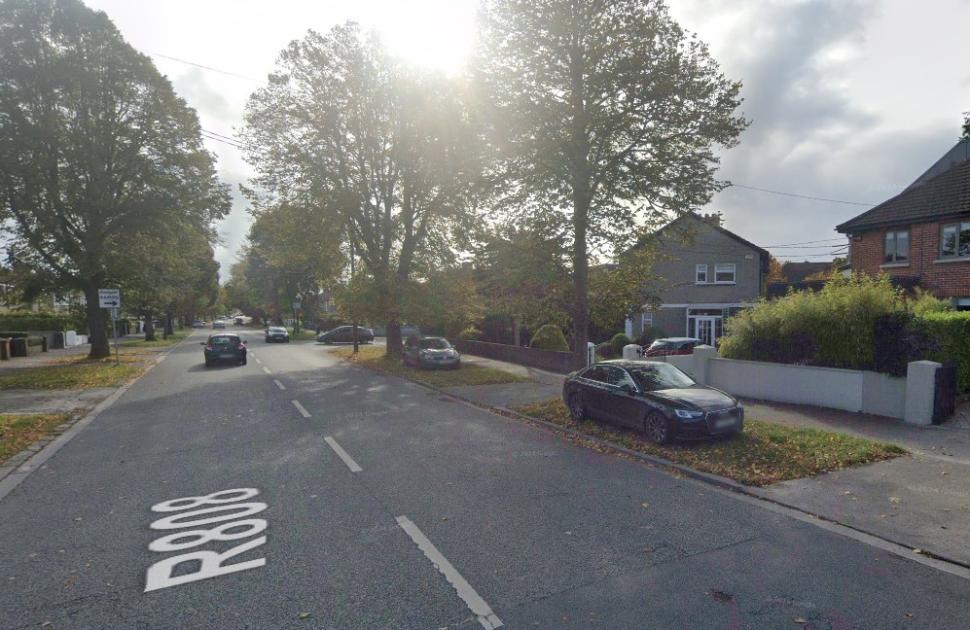
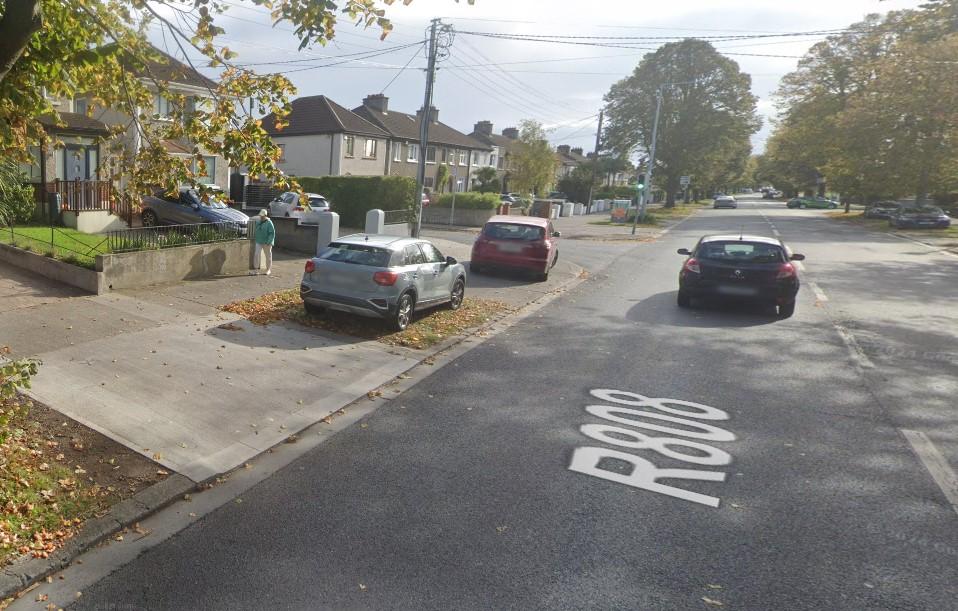
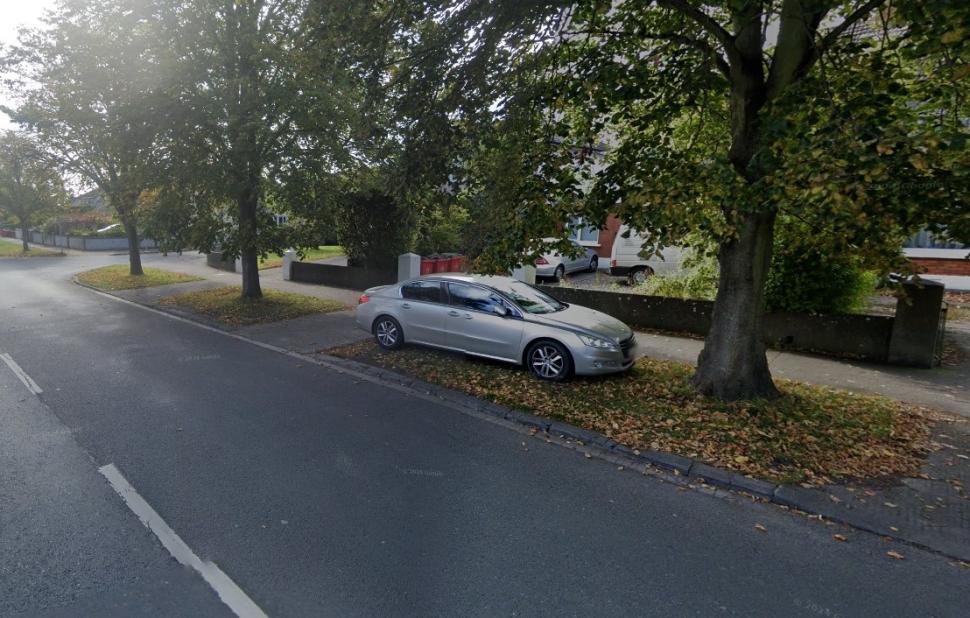
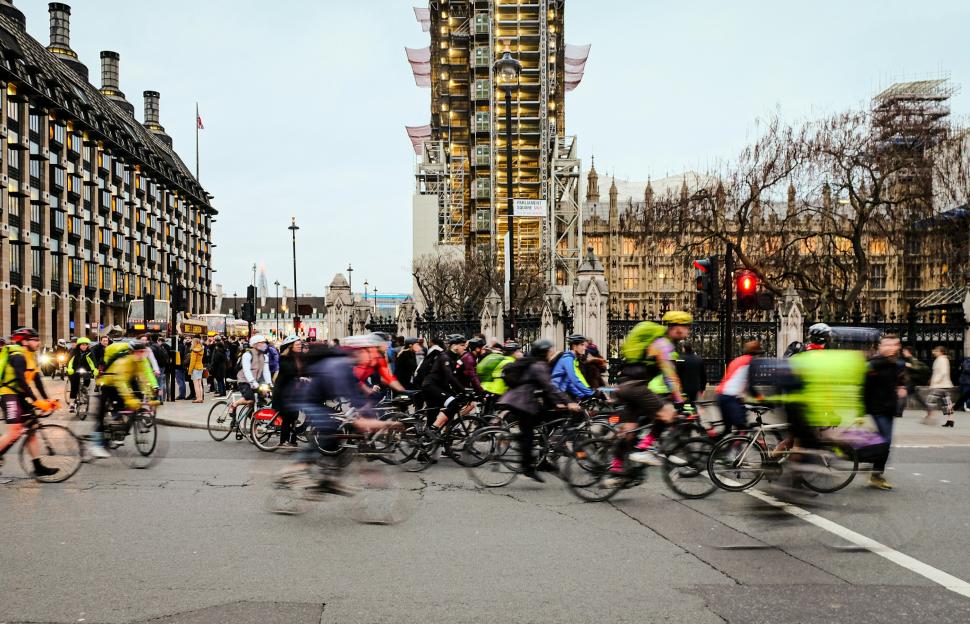

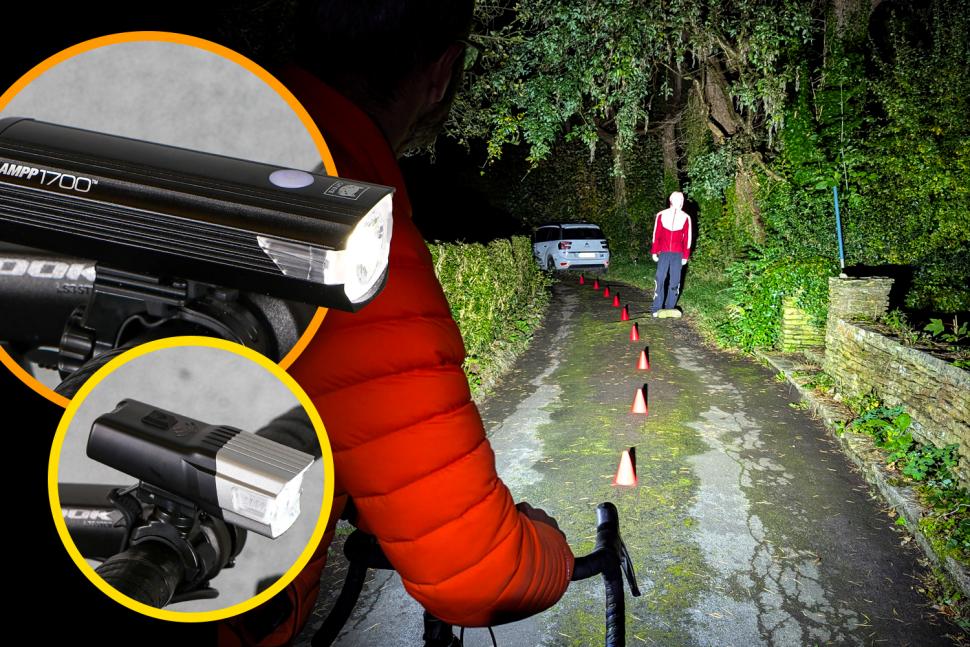
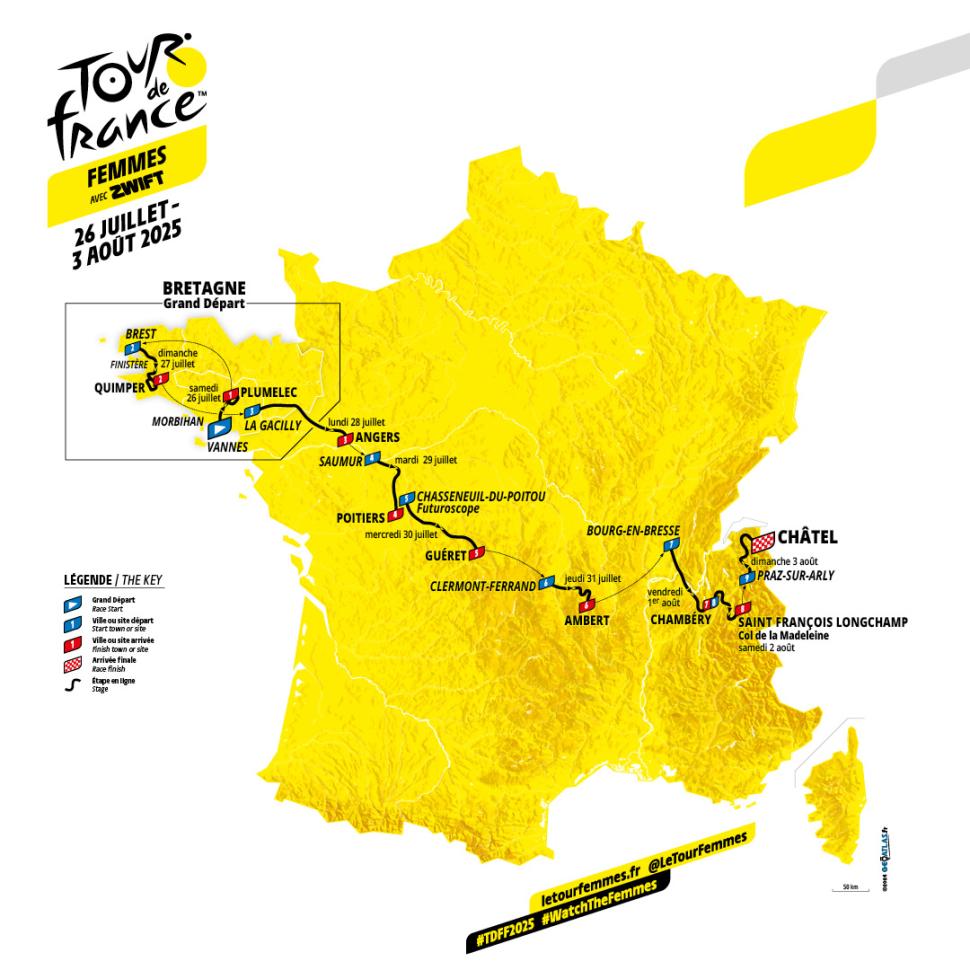
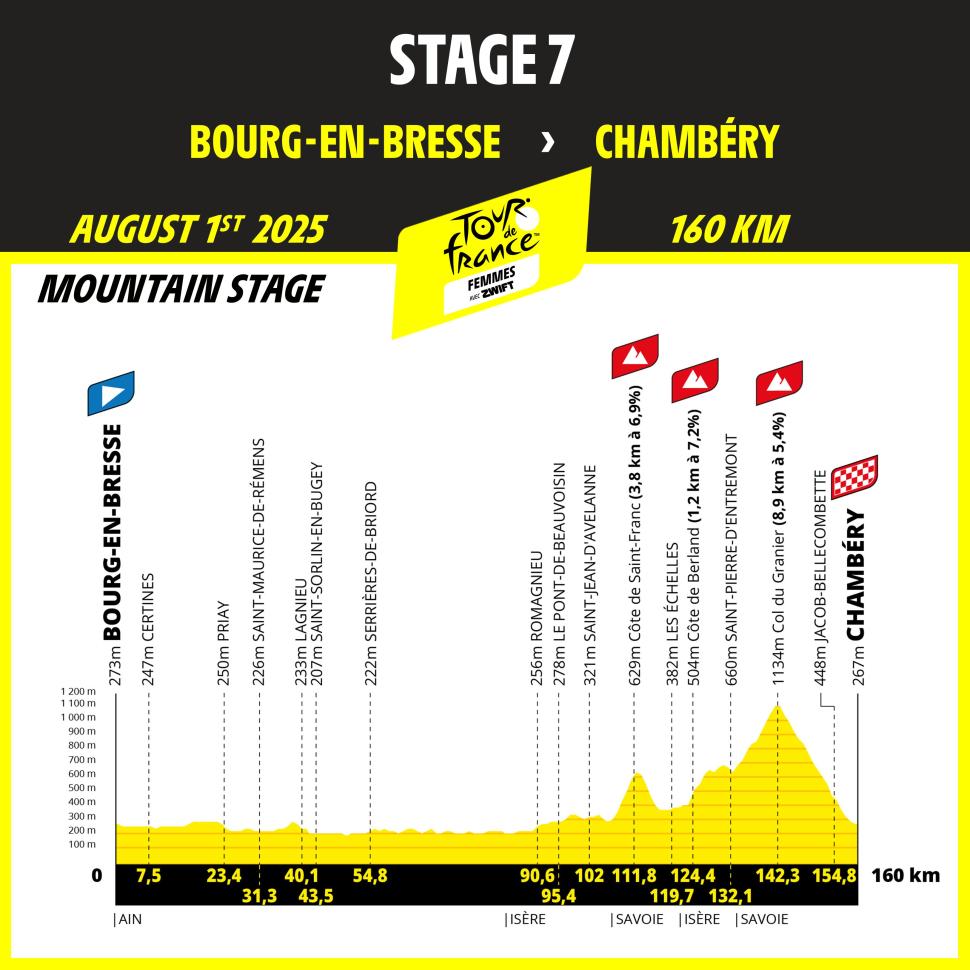




Add new comment
29 comments
Surely no change? TT bike saves about 5%, so with 3 flat kms at 45km/h on the climbing bike taking 240 seconds the TT bike would save 12 seconds before the road went vertical. No way is slowing down, changing and getting back up to speed going to take fewer than 12 seconds, even before you factor in the influence of the break in rhythm.
Rather than turning himself into police, why didn't he just turn himself in to police?
Nice!
https://www.theguardian.com/us-news/2024/oct/29/new-york-jaywalking-legal
Yeah!
It's only taken them a century to undo a massive victim-blaming (real) conspiracy (full article requires account). Or brilliant lobbying and PR, for those "glass half-full of my favourite tipple!" types.
In one place.
Although...
But it's the US, so obviously nobody's going to be e.g. sued by a driver for damage to their vehicle after they've been run over, right? Ha ha ha .. ha ...
Motorist salami tactics:
1) illegally create unofficial parking spaces by driving over the grass verges until they're too scarred to be recognisable as a grass verge.
2) complain about loss of parking when these micro brownfield sites are repurposed.
3) Be placated with extra official parking spaces
4) place traffic cones in the space closest to your front door, start thinking of it as 'your' parking space and attack anyone who looks at it.
Make that the last two stages...
Ahead of tomorrow’s Budget, the House of Commons has formally appointed its new Transport Committee, which will be headed by Labour MP Ruth Cadbury, who co-chaired the All Party Parliamentary Group for Cycling and Walking for eight years.
In amongst all the doom and gloom, a ray of light! I'm hoping that she wouldn't have taken the job unless there was a guarantee of proper funding, but tomorrow's budget will tell.
However, Heneghan responded by saying the scheme would be unfair on residents who want to host parties.
It would be really interesting to sit these car-addicted people down and explain things to them in words of one syllable to see if they are capable of understanding that we don't have to cater for all the people who want to drive all the time. Can they even comprehend the damage that mass car ownership and use has done to our communities?
We expect politicians to represent everybody, not just one segment which is entitled, selfish and utterly blind to the alternatives.
With all those parties and the people arriving by car - there must be a lot of drunk/drug-driving afterwards.
You know, you can have parties without everyone getting drunk and drugged up.
Probably boring parties though.
Not according to Boris, not even when they're banned: not that I've read his book.
“Genuine question, is it still a requirement, or good practice to look behind you before you manoeuvre on a bicycle,” asked Rod, for some reason.
“Maybe wear bright colours, I know I would,” added Andrew, starting a hi-vis victim blaming theme in the comments.
“He should be wearing hi-vis and riding in the ditch, not blocking the roads that are paid for by hard working tradies,” said Jan.
Meanwhile, Stu added: “Maybe he didn’t see you because you’re dressed in black, you moron.”
And Jimmy said: “Shouldn’t be riding his bike on the highway like that. Seems like a no brainer right!”
“Boohoo,” concluded Johnny. “Stop cycling in the middle of the road you w@nkers.”
The depth of motonormativity is so entrenched in our society that it's going to take more than a generation to change. It's also incredibly frightening that there are so many profoundly entitled, blissfully ignorant drivers in charge of a lethal weapon that we have to share the roads with.
But the real problem is that the msm is run by people who support them, and such attitudes are not examined and criticised for their selfishness, which makes the process of civilising drivers harder and longer.
Perhaps it's time that riding a bike was part of an overall driving test? First start with a test to ride a bike on the road, then a motorbike test and finally a car test: if of course you pass the first two parts.
And yes, some people can't ride a bike due to illness/disability but the population in general can and should.
Add to that re-tests every five years and perhaps the streets might be a little safer for all.
I think the thought is in the right direction, but in the UK it needs to run from bottom to top:
a) Regular retests (maybe call them "refreshers"?) to help drivers stay current with new road features and law / best practice. And flag up medical issues over time (even if only to the driver - some people say they genuinely didn't know!). Also to reinforce that driving licence is just that - a licence to perform a potentially dangerous activity according to certain rules.
b) ... that last bit has to couple to a general understanding of "licence - so if you don't obey the rules your licence can be revoked". That requires a genuine chance (even if still small) that you'll be detected, And a clear and definite process for revoking - not just "points mean ... er... more points; maybe argument in court but leniency". This also requires monitoring and further sanctioning those who ignore bans.
That's still small beer but for the UK would be wildly radical, and no doubt cost a fair bit (even if it might save us money overall...)
The reason those come first is if the only thing you change is adding a cycle test very little will change * in the cycling demographic **. So most adults in the UK will drive and not cycle. So they will encounter very few cyclists while doing so. (And FWIW most of those cyclists will be the quick and the brave, and not OAPs or ten-year-old children or those with disabilities.)
So after doing their cycle test they'll not refresh that knowledge and their understanding of or empathy with cyclists will evaporate, as now.
* Quite a few kids get taught to cycle already - not sure the percentage? At least when I were a lad RoSPA organised a cycling proficiency test (presumably Bikeability etc. are similar)?
** Except for those practicing for the cycling test... learner driver cyclists - what's not to hate for some?
I think ultimately the best way to improve driver behaviour by the greatest amount is to change the demographic of those cycling. So that a large proportion - if not most - drivers cycle sometimes, as do their families and friends.
Skin in the game, you might say.
There is a proven way to do that... but it's long and involves many different elements. See NL, parts of Scandinavia, Seville, some other places in Europe...
In those cases there is good early "cycling education" - but not as part of the driving test, it's integrated with general "road using - by any mode of transport" from very early years. So you get things like this.
As the blinkers that create motornormativity begin to slide from more & more eyes, its becoming increasingly obvious that the Kingdom of Cardom needs a revolution to rid us of the many harms, drag-anchors and general degradations that the plague of motorised transports are causing.
* No parking on the shared roads, verges, pavements or any other supposedly common-ground meant for the many different purposes of all and everyone. Why do car owners get free car parking on public roads and other other infrastructure? Large fine & towing-off for all offenders.
* Road rationing, so that gridlocks and jams can't occur - auto gates across high-usage roads that are approaching their capacity for keeping traffic moving, with admittance only for a) cars with more than two occupants; bicyles, motorbikes and other small meant-for-one-person transporters.
* Speed limits much lower than the current limits, which paradoxically tends to prevent jams and gridlocks, as well as reducing the harms done when the incompetant crash into folk.
* Far more LTNs, with large parking areas next to major roads, park & ride schemes or similar arrangements to keep cars out of residential, shopping and other spaces meant for people not motorised status-weapons.
* Much higher VAT added to larger cars, to discourage the selling & buying of SUVs, cars with 5 seats of which only one is ever occupied, etc..
All these things and several other car-reducing policies are possible ... and beneficial, even to the car-addicted. The question is: which politicians are brave enough to implement them against the intial outcry from the usual suspects? They don't have to be that brave, as after a year or two, everyone will get used to it, like it and wonder why they ever put up with motornormativity to the degree we all do now.
I can't agree with your first suggestion, as it wouldn't work in rural areas like mine. Many workers in the food industry in this part of the country live in houses of multiple occupancy, and have no viable means to get to work other than by car. It is easy for those of use who sit in front of a computer to say they could cycle, but a half hour bike ride at either end of a 12 hour shift of physical work is not really feasible. The truth is most legal parking causes no real issues. Where it does, the parking restrictions should be changed. Parking restrictions should be uniformly and fully enforced.
The Japanese Kei car rules could be a real improvement, whereby unless you can prove you have adequate off road parking, you can only buy a small car if you live in designated areas.
The correct solution here is both - redesgnate some of the space as dedicated car parking facilities (and charge for their use) and ban parking on anything that's not specifically set aside for it.
The principle that people shouldn't be able to monopolise common space for their own selfish needs just because they happen to want it for a car is a good one. So is having a coherent system that actually works, parking included.
I live in a very rural area which includes terraced and other accommodation with no included car park. Some streets are infested with so much tin litter that it becomes near impossible to traverse them; or, if it can be managed, there are multiple dangers as peds attempt to negociate the mobile tins scattered all over the pavements and into the often narrow road.
Just 50 - 200 yards from such streets there are often empty fields, waste ground and other places that could easily become a village or town car park for local residents. The streets could then be returned to a condition in which people can walk, play, meet and otherwise live in a community rather than a battery farm of wage slaves self-locked into their tele-gawping cage.
In some more recently-built parts such communal car parks have in fact been built as part of the new "estate". They also include shared green space, outdoor benches, shared gardening spaces, a communal hall, doctor's surgery and one even has a small cinema - accoutrements of a civilised and communal folk with the cars packed a short walk away. So it can be done.
That makes a lot of sense - but in Blightedland, every wage slave has a right to their mobile castle and a one-step access to it from the front door of their ticky-tacky castle. It needs to change. It probably won't.
'but a half hour bike ride at either end of a 12 hour shift of physical work'
I used to do it when I was a postie. Although I used to do 14 hour days.
What about special buses to get them to and from work?
But but that would be placing burdens on employers (rather than getting the infra that they and their workers use essentially as a freebie - or at least a given)!
But but that would reduce flexibility and choice! (If there's one thing that's politically agreed it's that "choice is a good" - except of course when it's the choice to not own a car, you're definitely reducing your own worth to politicians then...)
But but (for the current government, maybe...) that would be making "working people" more dependant on the bosses and business owners! (Or for this and the other colour government) that would be inadvertently limiting the aspirations of working people! (By suggesting that maybe they don't need a car). Then "why should the manager be able to drive to work but we have to take the bus?" - of course for generations (always?) cars have been about far more than transport...
The public transport system in the Netherlands is often overlooked (in favour of the attention on all the cycling). But it's light years ahead of the UK in terms of coverage, frequency and reliability. That allows a multi-modal journey approach so it can be as convenient - and even take about the same time - to cycle - train - walk a car journey of (say) an hour.
Won't somebody think of the illegal parking?
Can't they just drive across the cycle lane and illegally park on the pavement like everywhere else?
When will the cagers understand, the only reason we need cycle lanes is because of dangerous drivers. If they started to drive safely as per the highway code and watch the road instead of their phones we would not need them.
They are also needed to make it safer for cyclists to pass the endless queues of stationary or very slow moving cars and other motor vehicles stuck in traffic jams blocking the roads.
Surely the council's response should be to say, "No problem - we won't bother with the new cycle lane, but in that case we will have a lot more money available for traffic enforcement so as to keep people safe, and that will most definitely include enforcement upon people illegally parking".
But enforcing traffic rules is a tax on the honest motorist !!
Fixed it